Last updated on April 20th, 2024 at 12:12 pm
Cactus and succulent soil mix, also referred to as cactus soil mix, is specifically formulated for the shallow root systems of cacti and succulents. It’s the ideal soil choice for indoor plants such as cacti, succulents, and even bonsai trees. Utilizing cactus and succulent soil mix can significantly enhance the well-being of your plants when provided full care and suitable growing conditions.
Contents
- 1 What is the Difference Between Cactus And Succulent Soil Mix and Potting Soil
- 2 Ingredients For Making Cactus and Succulent Soil Mix
- 3 How to Mix These Ingredients?
- 4 How to Mix in the Right Ratio?
- 5 How to Use Cactus And Succulent Soil Mix?
- 6 FAQS
- 6.1 1- Can I use regular potting soil for my cactus or succulent?
- 6.2 2- Can I substitute any ingredients in the cactus and succulent soil mix?
- 6.3 3- Do I need to fertilize plants potted in this mix?
- 6.4 4- What if my cactus or succulent is showing signs of overwatering?
- 6.5 5- How do I know if my cactus or succulent needs repotting?
- 7 Author
What is the Difference Between Cactus And Succulent Soil Mix and Potting Soil
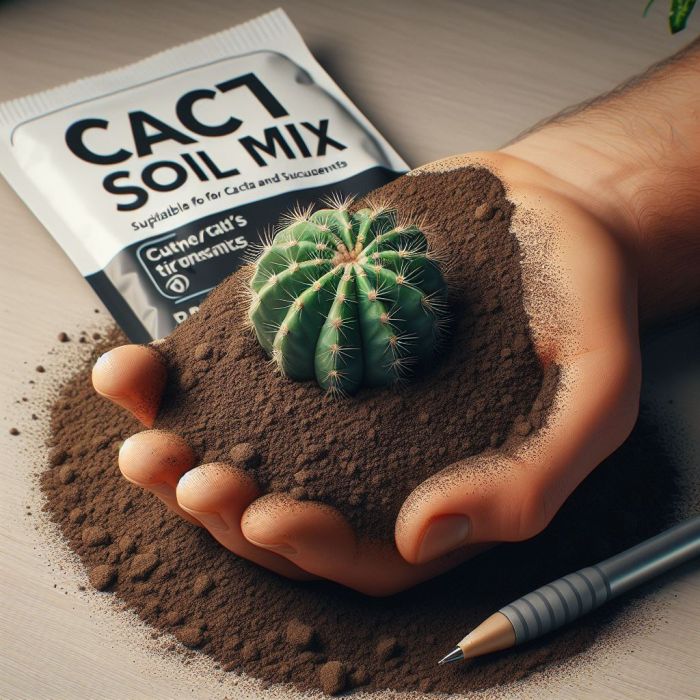
1-Drainage
Potting soil tends to retain moisture more than cactus and succulent soil mix. Excessive moisture retention can pose a risk of root rot for many plants. However, cacti and succulents have a particular need for soil that drains rapidly, mimicking their natural habitat. Cactus and succulent soil mix are tailored precisely for this purpose, swiftly eliminating excess water and fostering the health of cactus and succulent root systems.
2-Materials
Potting soil typically utilizes organic elements like pine bark, peat moss, and vermiculite. In contrast, cactus soil mainly consists of inorganic materials such as chicken grit, pumice, perlite, or gravel. However, cactus and succulent soil mix also include a limited quantity of organic matter, such as coco coir sourced from coconut husks, to enhance its texture and water retention abilities.
3-Density
Potting soil possesses a higher density compared to cactus and succulent soil mix. In the cactus and succulent soil mix, the inclusion of inorganic materials prevents compaction, ensuring improved airflow to the cactus and succulent roots. Sufficient aeration remains crucial for the healthy growth of cacti and succulents.
4-Proportion and Texture:
Achieving the right balance between a gritty, fast-draining texture and a small amount of organic material is crucial for making an ideal cactus and succulent soil mix. A typical mix might comprise 50-70% mineral components (such as sand, perlite, or pumice) and 30-50% organic matter (like compost or coconut coir). This balance ensures proper drainage and moisture retention, vital for the thriving growth of cacti and succulents.
Ingredients For Making Cactus and Succulent Soil Mix
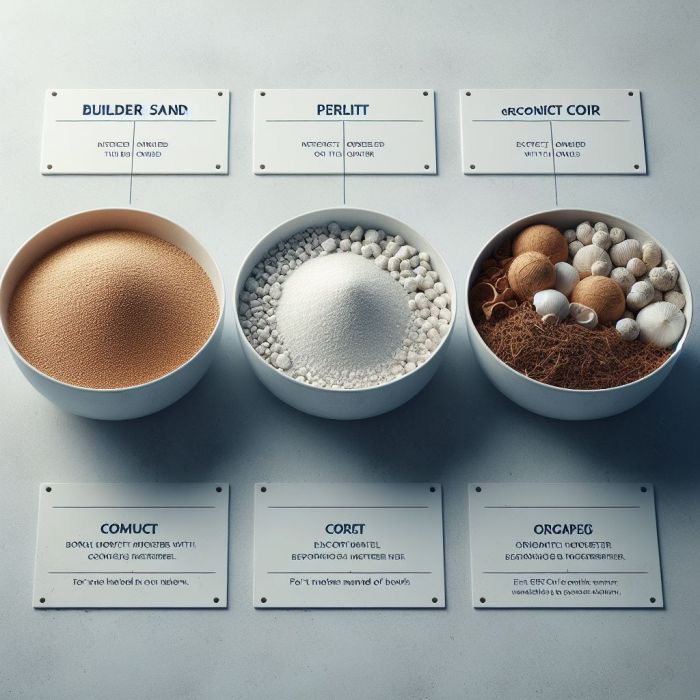
Making cactus and succulent soil mix is a straightforward task. By combining three ingredients in a bowl, you can easily prepare the mix.
- Coarse sand or builder’s sand
- Perlite or pumice
- Organic matter like compost or coconut coir
- Optional: Small amount of horticultural charcoal for added freshness
How to Mix These Ingredients?
To create a good cactus and succulent soil mix, start with a clean bucket or container. Get some sand, perlite (which looks like small white rocks), and pumice (another type of rock). Mix these together using amounts that let water drain away but still keep a little moisture.
Next, slowly add things like compost (which is like food for plants) and coconut coir (made from the outside of coconuts). Mix these in bit by bit. This helps the soil have enough water but not too much.
Mix everything really well until it looks crumbly, feels light, and has plenty of air space. If you want, you can also add a bit of horticultural charcoal. This helps stop bad smells and keeps the soil fresh.
Doing this makes a special soil that’s just right for cacti and succulents to grow healthy and strong.
How to Mix in the Right Ratio?
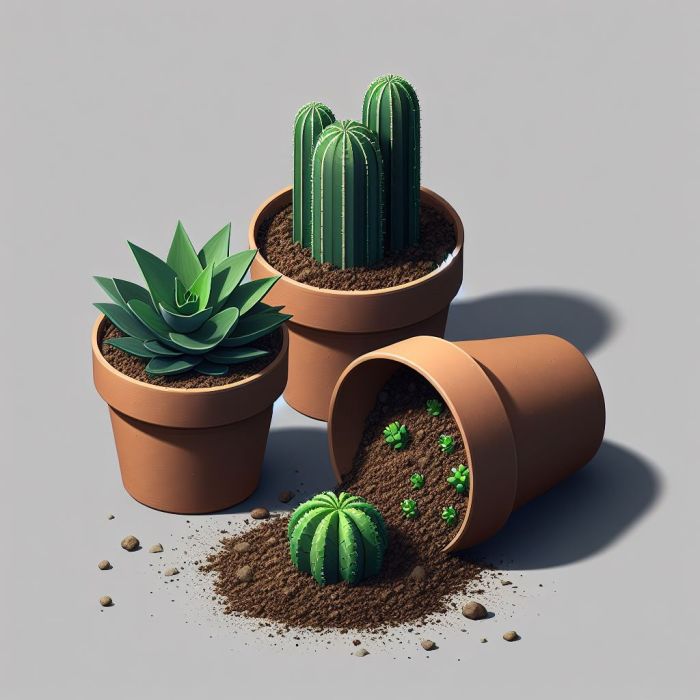
This step is simple—you just need to use the same amount of all ingredients. How much you need depends on how many plants you’re planting. For example, if you’re planting only one cactus, consider using a small cupful of coarse sand or builder’s sand, another cupful of perlite or pumice, and the same amount of organic matter like compost or coconut coir.
But if you’re planting more, like several cacti and succulents, you might need a larger quantity, maybe a bucket full of each ingredient. It really depends on the number of plants you’re planning to pot.
How to Use Cactus And Succulent Soil Mix?
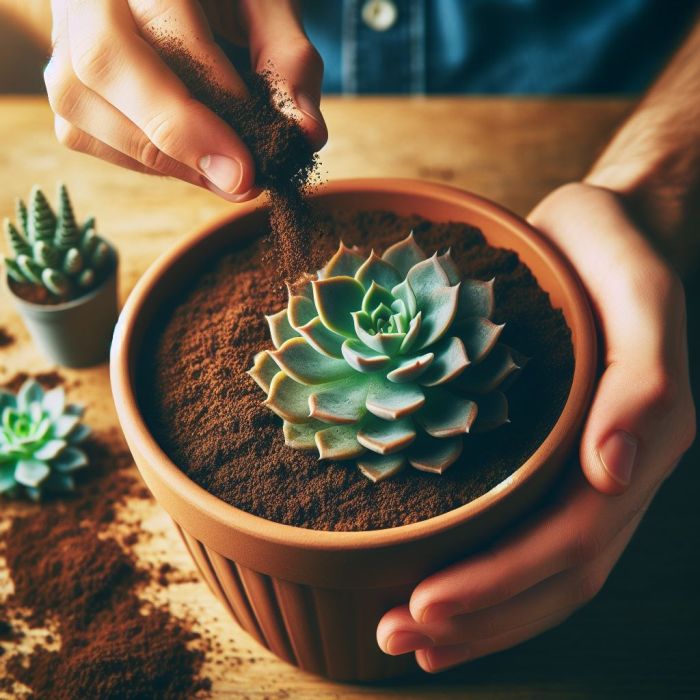
Selecting the Right Pot: Choose a pot with drainage holes at the bottom to prevent water from accumulating. Ensure it’s slightly larger than the plant’s root ball, leaving some space for growth.
1-Preparing the Plant
If repotting, carefully remove the cactus or succulent from its current container. Gently loosen the soil around the roots to remove any excess soil.
2-Adding Soil to the Pot
Begin by putting a layer of the cactus and succulent soil mix at the bottom of the pot. This helps in supporting the roots and allows for drainage.
3-Placing the Plant
Set the cactus or succulent in the center of the pot, ensuring the roots spread comfortably. Adjust the soil mix beneath if needed to ensure the plant sits at the desired height.
4-Filling with Soil
Carefully fill the spaces around the plant with the cactus and succulent soil mix. Pat the soil lightly to secure the plant but avoid compacting it too tightly.
5-Finishing Touches
the plant is securely potted, you can gently water it to settle the soil. Allow the excess water to drain through the holes at the bottom of the pot.
6-Placement and Care
After repotting, place the cactus or succulent in a location with adequate sunlight, based on the plant’s specific light requirements. Monitor watering needs—cacti and succulents typically prefer infrequent but deep watering sessions.
FAQS
1- Can I use regular potting soil for my cactus or succulent?
While regular potting soil can work, it often retains more moisture than cacti and succulents prefer. Using a specialized cactus and succulent soil mix ensures better drainage, mimicking their natural habitat and reducing the risk of root rot.
2- Can I substitute any ingredients in the cactus and succulent soil mix?
You can try alternatives based on availability and suitability. For instance, sand can be substituted with gritty substances like crushed granite. Experiment cautiously to maintain the soil’s ideal drainage and aeration properties.
3- Do I need to fertilize plants potted in this mix?
Cacti and succulents don’t require frequent fertilization. However, using a diluted, balanced fertilizer during their active growth phase (usually in spring or summer) can be beneficial. Remember not to over-fertilize, as these plants are not heavy feeders.
4- What if my cactus or succulent is showing signs of overwatering?
If your plant shows signs of overwatering, such as yellowing or mushy stems, stop watering immediately. Allow the soil to dry out completely before considering any further watering. Repotting into a fresh mix may be necessary if root rot has developed.
5- How do I know if my cactus or succulent needs repotting?
Signs include roots growing out of the drainage holes, the plant becoming unstable in its pot, or soil drying out very quickly after watering. Spring is generally a good time to consider repotting if necessary, allowing for growth during the active growing season.
Taking care of cacti and succulents is easier when you use the right soil. This special soil mix helps these plants grow well because it drains water properly and gives them enough air. Making your own mix with sand, perlite, and a few other things is simple. When you plant or replant your cactus or succulent in this mix, it helps their roots stay healthy and allows them to grow better.
Remember, these plants don’t need a lot of water or food. Using this special soil mix, giving them enough light, and not watering them too much are the keys to keeping them healthy and happy.

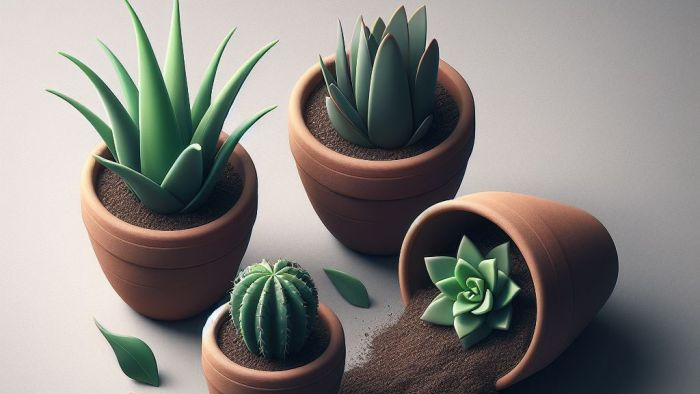
5 thoughts on “Making an Effective Cactus and Succulent Soil Mix”